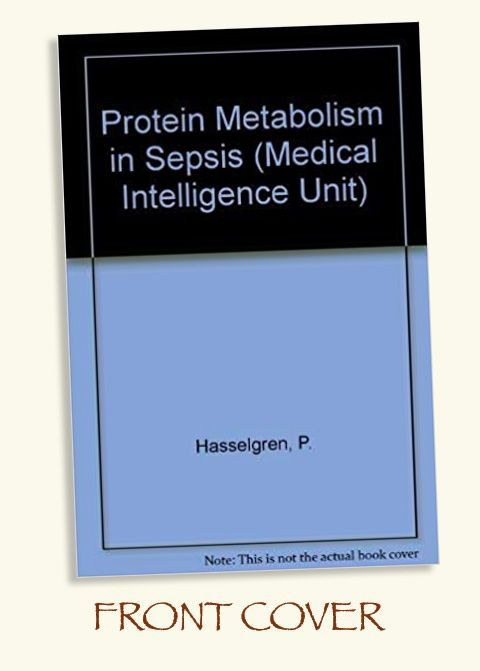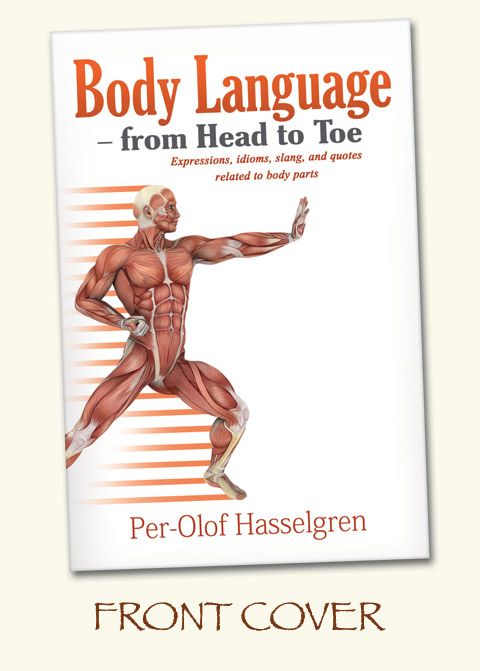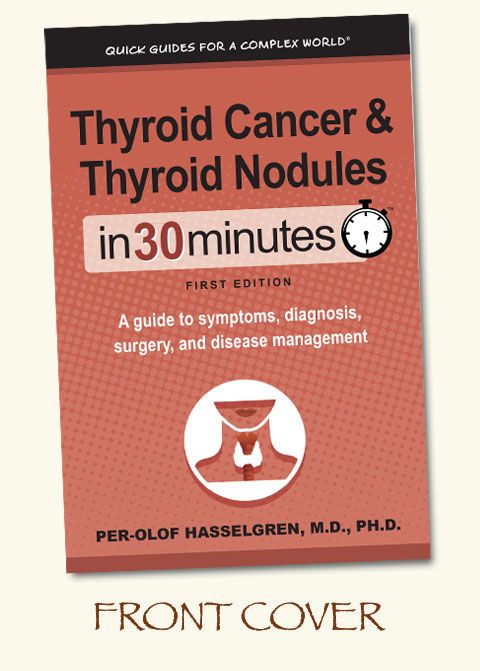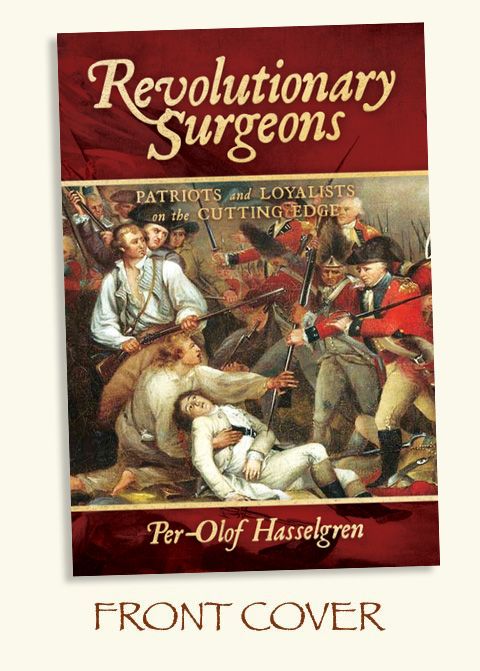
Protein Metabolism in Sepsis
Published in 1993 by R.G. Landes Company, Austin, Texas.
The book describes changes in protein metabolism, particularly in skeletal muscle, liver, and intestine, during sepsis. Methods commonly used to study protein metabolism are also described.
The book describes changes in protein metabolism, particularly in skeletal muscle, liver, and intestine, during sepsis. Methods commonly used to study protein metabolism are also described.

Per-Olof Hasselgren • Author
Released in 2015 by Strategic Book Publishing and Rights Co
“Body language” usually refers to feelings, emotions, and intentions expressed by various forms of nonverbal communication, including positioning the body or parts of the body in different ways, gestures, eye movements, and facial expressions. For example, a smile indicates that one is happy or pleased, a frown that one is worried or angry, etc.
In contrast, body language in the book “Body Language. From Head to Toe” refers to the use of body parts (anatomy) in the spoken or written language. Such words occur in many idioms, slang, and other expressions, and the book is a collection of them.
The book was written for three main reasons. First, anatomy matters, particularly in surgery. When Dr. Hasselgren has medical students and residents scrubbed in during cases in the operating room, there are many opportunities to demonstrate and discuss anatomy. He often makes the point that “anatomy matters.” He usually also (jokingly) adds, “You even need to know your anatomy to be able to speak and understand your language properly.” What he is referring to then is the large number idioms, slang, and other expressions that are directly related to human organs and tissues. Indeed, the number of idioms and expressions related to body parts is quite extensive.
Second, as someone moving to this country from another part of the world with a different language, Dr. Hasselgren has been very interested in the peculiarities of the American language. Idioms, slang, and other expressions are specific for any given language and quite often cannot be directly translated. Such expressions are typically not part of the English that is taught in school, and it takes living for some time in a new country before one starts to appreciate (and understand) those special expressions. During the more than thirty years that Dr. Hasselgren has lived in the U.S., his interest in American idioms and other expressions has continued to grow. This book contains a collection of idioms, slang, and other expressions that are specifically related to human body parts. Although the interest in body language in part reflects Dr. Hasselgren’s profession as a surgeon, it also reflects his interest in the American language.
Third, the use of body part-related expressions is both interesting and fun. When one starts thinking about it, it soon becomes obvious that one uses or hears such expressions hundreds of times every day. The book “Body Language. From Head to Toe” alone contains approximately 2,000 idioms, words, and expressions related to body language. One can just open a newspaper, listen to the radio, or watch TV to find and hear numerous examples of body language. The use of body language in this context provides interesting information about the origin of many of these expressions.
Hopefully, anybody interested in the English and American language will enjoy this book. Persons with a medical background may also find interest in the book since it “connects” body parts with our language. Anybody who wants a couple of minutes of relaxation every now and then, or who may need some distraction during a vacation or a long flight, may also enjoy flipping through the book and finding some expressions of interest.

About Thyroid Cancer & Thyroid Nodules In 30 Minutes
Published in 2020 by i30 Media Corporation, Newton, Massachusetts.
Every year, millions of people are diagnosed with thyroid cancer or thyroid nodules. In Thyroid Cancer and Thyroid Nodules In 30 Minutes, you will learn that most thyroid nodules are benign and many patients with thyroid nodules do not need surgery. Further, even if the nodule turns out to be malignant, the majority of thyroid cancers can be successfully managed with an excellent long-term prognosis.
The author of Thyroid Cancer and Thyroid Nodules In 30 Minutes is Dr. Per-Olof Hasselgren, an experienced endocrine surgeon and professor at Harvard Medical School. Over a 45-year career, he has operated on numerous patients with thyroid cancer and thyroid nodules. Using plain English, he will explain basic concepts related to thyroid cancer and thyroid nodules, including:
- The anatomy and function of the thyroid gland
- The role of thyroid hormones
- Blood and imaging tests
- Hyperthyroidism and hypothyroidism
- Bethesda classifications and the risk for cancer
- Management of benign nodules
- Management of thyroid cancer
- Total thyroidectomies and other types of thyroid surgery
- Different types of doctors and medical specialists you may encounter
The author will also describe four cases involving patients diagnosed with thyroid nodules, including malignant nodules. He will help us follow the diagnostic workup and management options (including different types of surgeries) in a 37-year old stay-at-home mom, a 19-year old college student, a 62-year old truck driver, and a 58-year old high school teacher.
This book is not a do-it-yourself guide — a doctor is needed to diagnose and provide medical advice. However, Thyroid Cancer and Thyroid Nodules In 30 Minutes can help you understand what your doctor is recommending and why. If you or a loved one is diagnosed with thyroid nodules, Thyroid Cancer and Thyroid Nodules In 30 Minutes can be an invaluable and expert resource.
The book received a Silver Ben Franklin Award in the Health Category for Excellence in Publishing from the Independent Book Publishers Association in 2020.

Revolutionary Surgeons offers an integrated picture of surgeons as political and military leaders of the American Revolution.
Published in 2021 by Knox Press.
Prominent surgeons participated in political activities that ultimately resulted in the breakaway of the colonies from Britain. Surgeons were members of the Sons of Liberty and other groups opposing Acts imposed on the colonies by Parliament.
Similar to other groups in society, surgeons were split in their view of the growing opposition against the English rule of the American colonies and the wish to create an independent nation. Even with different opinions of the revolution, Loyalists and Patriots were often able to get along and live peacefully in the same communities.
Surgery underwent dramatic developments during the 1700s. Although anesthesia was still a century in the future, surgeons performed extensive procedures, including laparotomies (opening of the abdomen) for tumors, mastectomies for cancerous growths, amputations of the leg above or below the knee, and cutting for the stone (removal of bladder stones). An increased understanding of human anatomy was one reason why surgeons kept moving the boundaries of what was considered possible. With no anesthesia, patients’ screams from pain and horror were unimaginable. Many patients died from shock on the operating table or from postoperative bleedings and infections.
Stories about surgeons as leaders of the American Revolution and about their heroic surgical procedures provide for an exciting read.
Reviews
Kathy Talley (Reviewer) has just reviewed Thyroid Cancer and Thyroid Nodules In 30 Minutes.
Rating: 5 out of 5 stars
For years, I have had thyroid nodules, and see an endocrinologist regularly for treatment. When I saw this book on NetGalley, I immediately wanted to read it to find out more about my condition. I was lucky enough to get an advanced copy, which I read in a short time. The book is not long, but it provides a good overview and explanation of the thyroid, thyroid nodules and thyroid cancer. Luckily, my nodules are quite small and have not led to surgery or to cancer—which I hope continues. This book can provide a lot of good information on the thyroid for anyone with a thyroid condition, who has a loved one or someone they know with a thyroid condition, or who has or has had thyroid cancer. I liked the way Dr. Hasselgren began by setting the stage, discussing the thyroid, where it is located in the body and its functions. He then covered everything and anything a person would want to know about nodules, thyroid surgery and thyroid cancer. The book was not too wordy, nor did it “talk down” to the reader. No, it was professionally written, in language anyone could understand. I wish there were more books like this one about other diseases, afflictions, etc., so people could better understand the ins and outs of medical things. Sometimes, a patient will not ask a doctor many questions, though he/she may want the answers because he/she feels they are asking stupid questions or taking up too much of the doctor’s time. Books like this one could help them understand their own mysteries of medicine. I am grateful that I got this book from NetGalley to read and review because it definitely helped me understand a lot the thyroid.